Knowledge from Olle Garden Bed: Planting thyme
Thyme is a cold resistant, perennial, evergreen herb, which is very suitable for stewing and soup in winter. The leaves are small, but very delicious. In addition to the kitchen, thyme is very popular as a landscaping plant in rock gardens and courtyards, thanks to its tolerance to dry and hot conditions. The following content also has some reference value for raised garden beds.
Many chefs believe thyme is a staple herb, which is often used in combination with other Mediterranean herbs, such as oregano and parsley. Fresh thyme can enhance your cooking effect and make your kitchen smell like summer.
Thyme has a wonderful spicy taste, which often reminds people of clover. It smelled so lovely that in ancient Greece, it was a compliment to tell others that they smelled like thyme.
Thyme plant information
Cold resistance range: 4, 5, 6, 7, 8, 9
Soil: loam, sandy, pH between 5.5 and 7.0, good drainage, rich in organic matter
Sunlight: all or part of the sun
Planting: Sow outdoors in early spring, 2-3 weeks before the last frost date
Spacing: 6 to 12 inches between plants, 16 to 24 inches between rows
Depth: 1/4 inch seed depth
Best partner: cabbage, tomato, potato, Brussels sprouts, strawberry, eggplant
Worst companions: oregano, onion, garlic, marjoram, radish
Watering: Watering regularly to keep the soil moist, especially in dry periods
Fertilization: Not required in fertile soil, you can apply low nitrogen fertilizer before planting
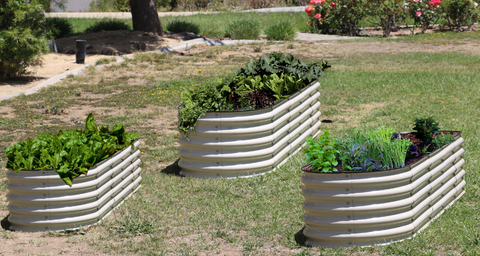
Common problems: alterleaf spot, root rot, gray mold, aphids, spider mites
Harvesting: 105 days after planting, harvest leaves and flowers as required
Thyme varieties
Thyme has ornamental and cooking varieties. Ornamental varieties are usually those we grow in the rock garden. Cooking food is a treasure of cooking. But that doesn't mean you can't use cooking varieties to add color to your garden.
There are more than 300 varieties of thyme. You can find more common ones in your local nursery, but if you go online, you will find more options. Valley growers offer a variety of options.
English
It is easy to become the most popular variety, and it is also our most relevant variety to cooking. This is an upright grower suitable for Zone 5-9. It grows to 12 inches high. This variety is sometimes referred to as common or German thyme. The name doesn't matter. To verify whether it is the type you want, look for the scientific name Thyme Vulgaris.
lemon
Lemon thyme is an upright form with attractive variegated leaves and a rich lemon scent. It has good cold resistance and can grow in 4-11 planting areas. Rapid growth.
coriander
Red stems and beautiful pink flowers, this is an attractive variety, both cooking and ornamental. It looks beautiful along the path and has a fresh fragrance.
Thyme caraway can be used as a substitute for caraway seeds, and is well mixed with roast meat and bread. Vigorous growers in 5-11 district.
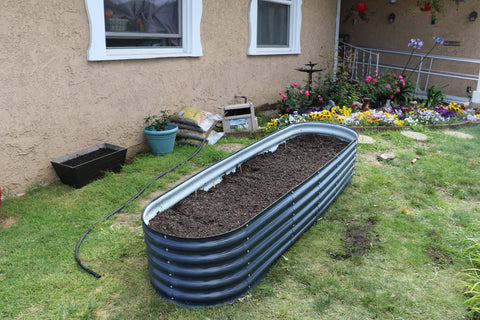
Juniper
Juniper thyme grows upright to only six inches tall, making it an ideal container plant. The little silver leaf gave it the nickname "Thyme Moonlight". You can plant thyme indoors and enjoy it all year round. It is very suitable for deck in summer and sunny windows in winter.
hairy
This species is a crawler, valued between the rock garden and the paver. It is only four inches tall and has gray, slightly fuzzy leaves, hence its name. This will not produce many flowers.
Peristaltic Thyme
Another ornamental species is valued for the rock garden. Also known as the mother of thyme, it grows in low mounds or lumps. Produce beautiful flowers loved by bees.
Spiritual Thyme
I really want to add this type to my fairy tale garden. This is a creeping ornamental variety with small leaves and delicate lilac flowers. It can only grow to four inches wide and grows slowly. Areas 5-9.
How to plant thyme
Thyme, one of the European herbs, evolved from the rocky and sandy coastal climate of the Mediterranean Sea. Planting thyme is a perfect choice in arid areas and an ideal plant for xerophytes. Once established, thyme will well withstand drought conditions.
Growth zone
Thyme performs well in USDA 5-9.
Solar Requirements
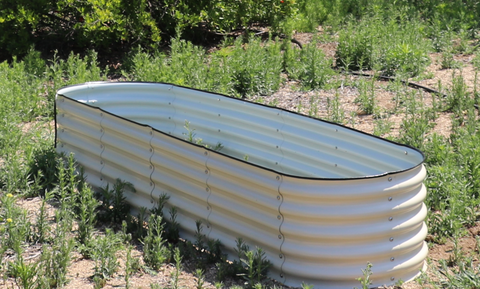
Thyme likes sunshine, the hotter the better. Give it plenty of sunshine at least 6 hours a day.
Soil requirements
Thyme likes slightly alkaline soil, with pH value between 5.5-7.0. If your soil is acidic, you can add lime to increase your pH.
The soil where you grow thyme should be well drained and loose. Since I started in thick clay, I have added sand to my land. Sand helps loosen the soil, spread the roots, and help drain water.
I planted thyme in two places. One is on the raised herb bed outdoors, and the second is in my greenhouse. In both cases, I grow thyme with herbs like rosemary, oregano and sage. They all have similar growth conditions and do well nearby.
Start with the seed
Like rosemary and mint, thyme is difficult to start from the seed and has a low germination rate. If you decide to start with seeds, add four seeds for each pot and place them in a warm room over 70 ° F.
Reproductive Thyme
Cutting and layering can be well used as communication tools. In addition, you can purchase thyme plants online or from your local nursery. Make sure you get the variety you want - whether it's cooking or watching.
transplant
You can transplant the seedlings outdoors after the soil warms to 70 ° F and the danger of frost disappears.
Separate the thyme by 12-24 inches, depending on the variety. The creeping species need more space than the erect species. Keep in mind that when you plant between pavers, the plants will also climb on your path.
Utensils
Thyme performs well in containers and is a popular indoor plant. It has a pleasant aroma, especially if you choose lemon thyme and other varieties. When growing indoors, you need to place it in a sunny window or under a growth lamp.
When placed in the container, use a light seedling mixture. I often mix cactus soil with seedlings to please thyme. Cactus potted soil contains sand to help drain water. In addition, when potted, I will add one or two spoons of aged compost.
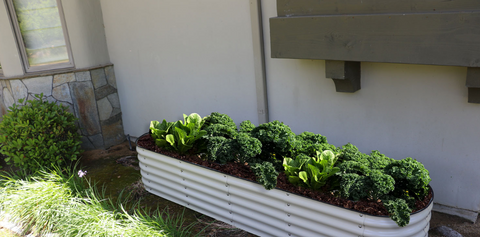
Care for Thyme
Thyme is a cold resistant herb, easy to care for. Thyme will die in winter, but my outdoor plants often remain green until December. In the warm winter, my greenhouse plants have green leaves throughout the dormant season.
watering
Thyme has strong drought resistance, so let it dry between watering. It is much better to water the soil thoroughly after it has dried to three inches than to light it every few days.
apply fertilizer
Like most herbs, thyme does not like over fertilization. While planting thyme, I cover my plants with two inches of rotting compost in the spring. This seems to do a good job of keeping plants healthy.
Split Thyme
Thyme benefits from a split every four years. After a few years, the stems become thicker and the leaves become fewer. Dividing your plants will encourage new growth - you can share it with friends.
cover
Covers are very useful, especially in winter. In late autumn, add a thick layer of straw or wood chips around the plants to provide winter protection. This is necessary for colder climates, so your thyme will not die with the cold.
Problems and Solutions of Thyme Planting
Thyme is cold resistant and relatively carefree, but there are some things you want to pay attention to.
Root rot
One problem that thyme may develop is root rot. Root rot causes root rot, and they cannot absorb nutrients.
Thyme likes light, well drained soil and hot, dry weather. If your thyme is in thick soil and you have a humid spring, it may develop into root rot and death.
Botrytis cinerea or Botrytis cinerea
Thyme can also get gray mold, which shows as gray spots on the leaves. This is caused by excessive moisture or high humidity. When the weather is wet, it is difficult to control the condition of outdoor plants. Therefore, if you live in a wet area, you may need to store herbs that like drought in containers.
Make sure your thyme is in well drained soil and has enough space for air to circulate around the leaves. You can spray neem oil to help control fungi.
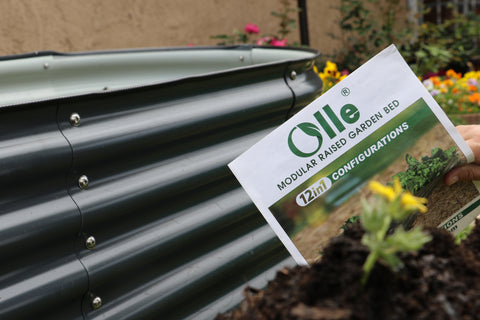
Companions plant thyme
Some plants that benefit from planting thyme near them are:
strawberry
Chinese cabbage
Tomatoes
potato
eggplant
Broccoli
Cabbage
Bees and other pollinators like thyme. In most cases, we may harvest thyme before it blooms (this is when the essential oil is strongest). However, you may want to have one or two plants bloom for bees.
Do not plant thyme with the following drugs:
onion
Garlic
Ma Yulan
radish
Harvest, store and use thyme Harvest thyme with sharp scissors. Cut the twigs from the plant. Thyme is most effective before it blooms, but you can harvest the leaves when you need them. Thyme responds well to pruning and will thrive after pruning, so don't shrink back.
Store fresh thyme in the refrigerator's fresh-keeping box for up to two weeks. You can also dry it. Cut the twigs before they bloom and tie them in a bundle. Put them in a paper bag with holes to keep the leaves clean. If they fall off the stem, they will come together. Leaves are ready for storage when crisp and fingers are broken.
A good way to use thyme is to make delicious marinade.
Application of Thyme in Natural Medicine
Thyme is not only great in your cooking pot, but also has medicinal value. It is famous for its antiseptic properties and is a popular ingredient in many health products.
It was especially popular in oral and dental care in ancient times, and still exists in some products today. Thymol is one of the ingredients in mouthwashes such as Listerine and Vic Vapor Rubs.
baseline
Herbs are essential to any garden - even if you have only a little space on the windowsill. Of all the herbs, thyme is one of the best because it is multifunctional and easy-going.
